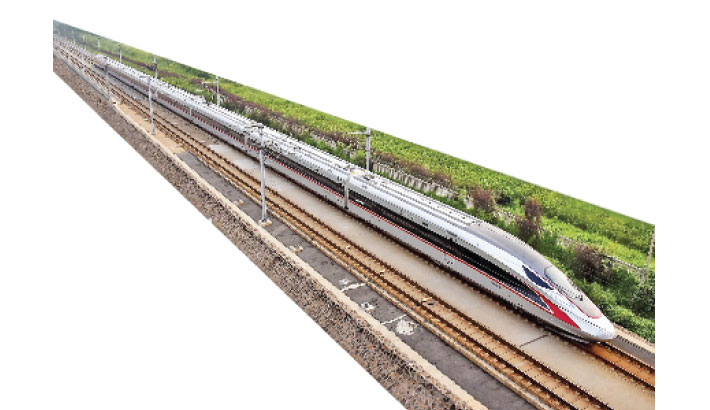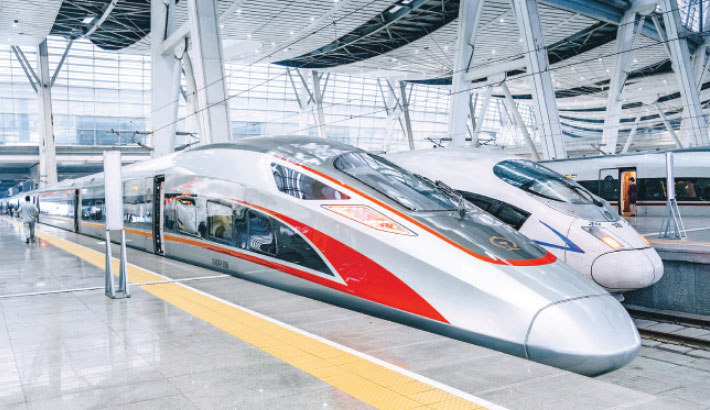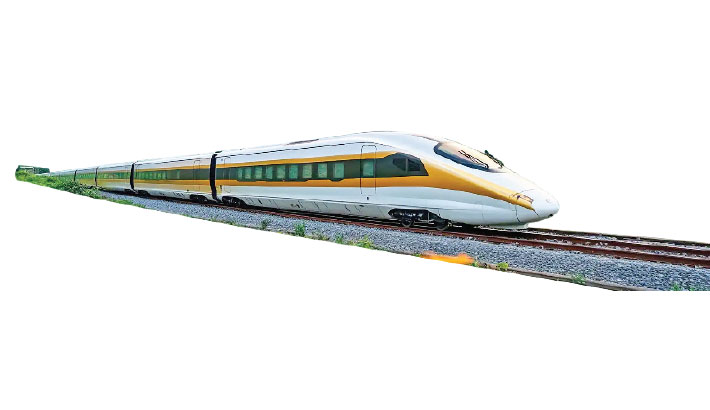Md Shahadat Hossain
From roads to rails: China’s transportation revolution
Bullet trains generally operate at speeds of 250-350 km/h, and a modern train named Fuxing Hao can run experimentally at up to 400 km/h
Published: 31 Oct 2025

In today’s fast-paced world of technological and economic competition, China stands out as a remarkable example. Over the past four decades, it has made extraordinary strides in economy, technology, industry, agriculture, and military strength – with one of the key drivers being its strategically designed and highly advanced transportation system.
China has brought revolutionary changes in road connectivity and high-speed rail (bullet train) networks, significantly enhancing industrialisation, international trade, education, tourism, and the quality of life of its people. Today, modern infrastructure and the fastest transportation system have not only made China the world’s second-largest economy but also established it as a globally influential power.

China’s roads are generally wide, with four, six, or eight lanes, and are often surrounded by greenery. Trees and bonsai plants are neatly lined along the sides of the roads. Many tunnels have been constructed through the mountains, and sidewalks are consistently present along the roads. Trees are systematically planted along the sidewalks and on divider islands.
To connect various regions of the country, China has built long national highways. One significant example is National Highway 219, which stretches along China’s western and southern borders.
The history of China’s transportation system is very old. Thousands of years ago, China was a center of international trade through the Silk Road. At that time, roads and caravans of donkeys and horses were the main means of communication. However, the real development of modern road and rail systems began in the 20th century.
Particularly after 1978, following Deng Xiaoping’s (Chinese statesman, revolutionary, and political theorist who served as the paramount leader from 1978 to 1989) economic reforms, China witnessed rapid growth in transportation infrastructure. Since then, the government has invested heavily in expanding road networks, constructing expressways, and laying the foundation for modern railways. As a result, China now possesses the world’s largest road and high-speed rail network.

China’s road connectivity development is significant not only domestically but also internationally. Currently, the total length of roads in China exceeds 5.4 million kilometers. Among these, expressways alone extend over 100,000 kilometers, making it the longest in the world compared to any other country. These roads connect not only the capital, Beijing, but also remote provinces, industrial areas, ports, airports, and tourist centers. The road network links China to the Eurasian Highway and other international trade routes.
Even in remote mountainous and desert areas, China has built modern roads, which not only overcome the country’s geographic diversity but also reduce regional disparities.
High-speed railway system
China’s most notable achievement is its high-speed railway (HSR) system. As of 2025, China’s high-speed rail network exceeds 50,000 kilometers, accounting for nearly two-thirds of the world’s total high-speed rail. Bullet trains generally operate at speeds of 250–350 km/h, and a modern train named Fuxing Hao can run experimentally at up to 400 km/h.
China’s bullet trains are not only fast but also technologically advanced. Equipped with modern signaling systems, automatic safety features, earthquake-sensitive brakes, and improved passenger facilities, these trains rank among the best in the world.
Bullet trains now connect major cities within a few hours. For example: Beijing–Shanghai: The world’s busiest high-speed rail route. Guangzhou–Shenzhen–Hong Kong: Connecting international financial hubs. Beijing–Wuhan–Guangzhou: Making long-distance travel easier and time-efficient. China is also developing new routes to connect remote rural and mountainous areas with urban centers.

Impact on China’s economy and society
Economic growth: Fast transportation facilitates industrial production and product delivery, making China the “factory of the world.”
Improved quality of life: Journeys that previously took 12–15 hours can now be completed in just 3-4 hours.
Tourism expansion: Domestic tourism has increased, boosting the economy.
Rural development: Roads and railways link rural economies with cities, reducing regional disparities.
Environmental protection: Bullet trains reduce carbon emissions and set an example of eco-friendly transport.
International importance and the Belt and Road Initiative (BRI)
China’s transportation network is not limited to domestic connectivity. Through its Belt and Road Initiative (BRI), China is expanding bullet train and road networks internationally. Rail connections are being established in countries including Laos, Thailand, Myanmar, Russia, and Kazakhstan. The aim is to create a modern “Silk Road” from Asia to Europe. This initiative is opening new dimensions in global trade, tourism, and cultural exchange.
China’s advanced road connectivity and bullet train system are a marvel of the modern world. Building such a vast network in a short period and managing it effectively is truly commendable. It demonstrates that with proper planning, long-term vision, and state commitment, a country can reach the pinnacle of development.
Many South Asian countries, including Bangladesh, can learn from China’s experience. Particularly, increasing investment in road and rail systems would accelerate industrialization and trade while improving people’s quality of life. Therefore, China’s success is not just its own achievement but also a model worth emulating for the entire developing world.
Md Shahadat Hossain is a journalist
with the Daily Sun

